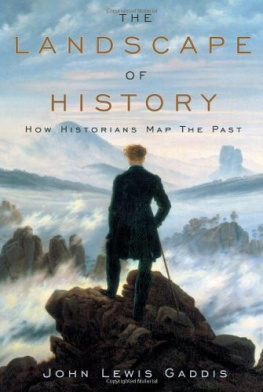Tom Griffiths - The Art of Time Travel: Historians and Their Craft
Here you can read online Tom Griffiths - The Art of Time Travel: Historians and Their Craft full text of the book (entire story) in english for free. Download pdf and epub, get meaning, cover and reviews about this ebook. year: 2016, publisher: Black Inc., genre: Non-fiction. Description of the work, (preface) as well as reviews are available. Best literature library LitArk.com created for fans of good reading and offers a wide selection of genres:
Romance novel
Science fiction
Adventure
Detective
Science
History
Home and family
Prose
Art
Politics
Computer
Non-fiction
Religion
Business
Children
Humor
Choose a favorite category and find really read worthwhile books. Enjoy immersion in the world of imagination, feel the emotions of the characters or learn something new for yourself, make an fascinating discovery.
- Book:The Art of Time Travel: Historians and Their Craft
- Author:
- Publisher:Black Inc.
- Genre:
- Year:2016
- Rating:5 / 5
- Favourites:Add to favourites
- Your mark:
The Art of Time Travel: Historians and Their Craft: summary, description and annotation
We offer to read an annotation, description, summary or preface (depends on what the author of the book "The Art of Time Travel: Historians and Their Craft" wrote himself). If you haven't found the necessary information about the book — write in the comments, we will try to find it.
No matter how practised we are at history, it always humbles us. No matter how often we visit the past, it always surprises us. The art of time travel is to maintain critical poise and grace in this dizzy space.
In this landmark book, eminent historian and award-winning author Tom Griffiths explores the craft of discipline and imagination that is history.
Through portraits of fourteen historians, including Inga Clendinnen, Judith Wright, Geoffrey Blainey and Henry Reynolds, he traces how a body of work is formed out of a life-long dialogue between past evidence and present experience. With meticulous research and glowing prose, he shows how our understanding of the past has evolved, and what this changing history reveals about us.
Passionate and elegant, The Art of Time Travel conjures fresh insights into the history of Australia and renews our sense of the historians craft.
Tom Griffiths is the W K Hancock Professor of History at the Australian National University His books and essays have won prizes in literature, history, science, politics and journalism, including the Prime Ministers Prize for Australian History, the Alfred Deakin Prize for an Essay Advancing Public Debate, and the Douglas Stewart and Nettie Palmer Prizes for Non-Fiction.
Griffiths luminous new work underlines the inarguable point that if we are truly to understand our history, we must get to know those who wrote it. A must-read for anyone interested in Australias past. -Tim Flannery
Greatly enriches our understanding of Australia past and present ... the book teems with fresh insights. Griffiths poses searching questions, which yield illuminating and often exhilarating answers. -Ken Inglis AO, award-winning author and historian
A rare feat of imagination and generosity. No other historian has so eloquently and powerfully conveyed historys allure. The Art of Time Travel will remain relevant for decades to come. -Mark McKenna, award-winning author and historian
An historian at the height of his powers. This is book is not only a meditation on the past, but a rallying cry for the future, in which Australias history might be a source of both unflinching self-examination and poetic wonder. -Brigid Hains, editorial director, Aeon Magazine
Sharp insights, thoughtful judgment, a generous spirit - Griffiths panorama of Australian historians shows why any similar survey conducted in the future will include his own artful work among the honoured. -Stephen J. Pyne, Arizona State University
An enthralling account of the intellectual rediscovery of Australia by fourteen of its most innovative explorers, vividly brought to life by a gifted interpreter. Tom Griffiths lyrical prose is mesmerizing in its mastery of Australias conjunctures of land and lineage, history and memory, fact and fable. -David Lowenthal, University College London
Suitable for lovers of Australian history, biography and culture, The Art of Time Travel is a graceful and lively work animated by Griffiths experience and enthusiasm -Books+Publishing
Tom Griffiths: author's other books
Who wrote The Art of Time Travel: Historians and Their Craft? Find out the surname, the name of the author of the book and a list of all author's works by series.











